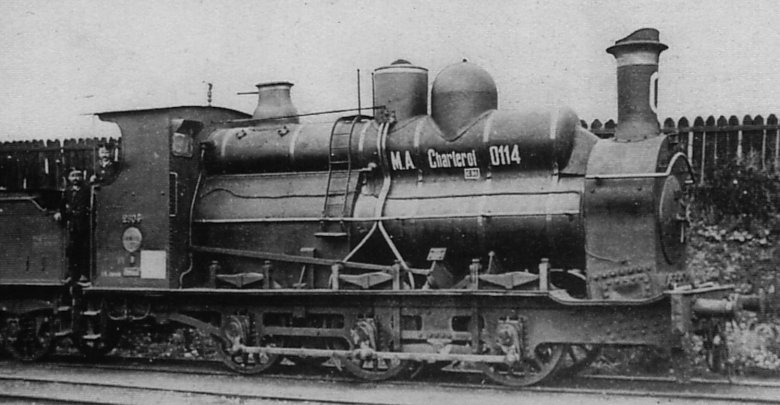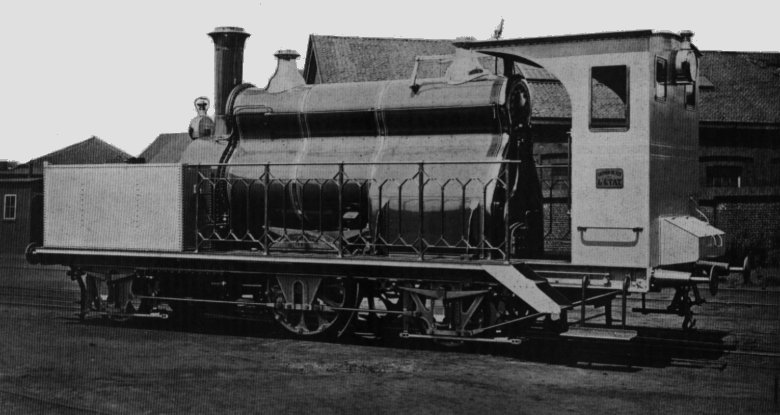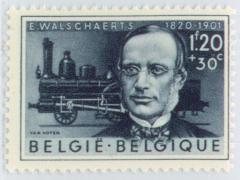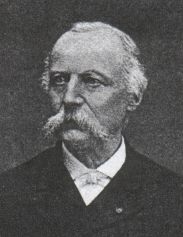Updated: 4 Mar 2014
Another pic of Loco No 1452
 
| |
Belgium is a small country, but has had more than its share of innovative and thoroughly competent engineers.
Egide Walschaerts, (1820 - 1901) inventor of the famous valvegear, is one. Alfred Belpaire, of firebox fame, is another.
It also seems to have had more than its share of very peculiar locomotives. Here are some joys to treasure.

THE BROTAN BOILER: 1908

Above: No 2804, originally built at La Meuse in 1900. Converted to a water-tube boiler in 1908. Photographed Feb 1916, in German hands.
This is one of the two Type 29 locos that were fitted with a Brotan water-tube boiler in 1908. Note the characteristic "visor" (visière) on the top of the chimney, which was supposed to improve the draught. (Thanks, Claude!)
The Brotan boiler was originated by Johann Brotan, chief of the Gmünd Workshop of the Austrian StEG (the Staatseisenbahn Gesellschaft or State Railway Company); he invented and patented this form of boiler in 1902. It was widely used in Hungary, but only in small numbers in other countries.
BELPAIRE'S LEVER-DRIVEN DESIGN: 1873
Though designed by an engineer with a big name in fireboxes, the purpose of the lever-drive on this locomotive is currently obscure. The aim may have been to keep the weights on the three axles equal by putting the weight of the cylinders over the two rear axles, as opposed to overhanging at the front, with the aim of improving adhesion.

Above: A lever-driven loco. This is No 761, designed by Belpaire and Stevart, and built by Carels in 1873. It appeared that year at the Vienna Exposition.
TECHNICAL DATA.
Cylinders 450 x 600 mm
Wheel diam 1.70 m
Safety valves Ramsbottom
ExhaustBoty variable
Injectors Friedmann
| | | | | | | | | |
| This loco "never gave full satisfaction". I know the feeling. The path from cylinders to the exhaust in the smokebox was too long, and the reaction forces of the rocking levers tended to distort the framing. The snag with this lever business- and I don't think it's that obvious- is that if you are transmitting a certain force through the piston rod, then the reaction force on the bearing of the lever is twice that. Maintenance would have been somewhat greater, and I should think any leaks of steam from the cylinders would have been likely to obscure the driver's view.
Note the Boty variable exhaust in the technical data; this was presumably a variable-aperture nozzle to opimise the draught. The name is unknown to Google.
For more lever-drive locomotives, see Russian Reforms
|
No 761 was retired in 1901. Since it gave more than 25 years service, it can't have been too bad a design. It is however an unresolved question as to whether it kept its lever-driven sysytem for all its life.
THE UGLIEST LOCOMOTIVE? 1880

Above: Loco No 1452 photographed at Malines in 1880, "tout pimpante" as one commentator put it, polished & ready for the National Exposition at Brussels.
As they used to say about sailing ships, if she looks right, she is right. But does she look right? This strange machine must be a prime candidate for the title of "Ugliest Locomotive". It is not exactly obvious, but No 1452 was a cabforward design. The rectangular water tanks are at the rear, on either side of the smokebox. The unusual boiler had a figure-of-8 section, the top cylinder being 0.7m in diameter and the bottom 1.05m.
In May 1880 the Minister of the Interior granted Belpaire a patent for "A light locomotive of special construction". It was built at the arsenal at Malines in the same year.
This was the last single-driver locomotive built for the Belgian State. It is unknown to Google. (apart from this page)
Wheel configuration 1A1 (2-2-2)
Driver diam 1.30 m
Safety valvesRamsbottom.
| | | | | |

Above: Loco No 1452 from the other side, before the boiler cladding was added
THE MAURICE URBAN STEAM-TENDER LOCOMOTIVE: 1866
This loco was designed for the Chemin de Fer du Grand-Central Belge, which worked the 1.8% Lodelinsart incline near Charleroi, drawing loads of 250 - 300 tons at a modest 12.5 mph. By 1872 Maurice Urban was a director of the National Railway Company of Belgium.

Above: It's not every loco that has a chimney front and back. Two tender-motor locos (Nos 148 and 149) as built at Louvain in 1867.
Note the large steam collector on top of the boiler, with two small domes for the steam pipes to the cylinders on top of that. The rear pipe dives under the loco and goes back to feed the tender engine, which had its own rear chimney for its exhaust. Whether the rear exhaust steam was used to heat the feedwater, as in Sturrock's steam tender, is not currently known.
No 148 was converted back to a conventional 0-6-0, so this design was clearly not a success.
The layout is very reminiscent of Archibald Sturrock's steam tender, introduced in 1863 for the GNR. His steam tenders also ran on six coupled wheels, driven by 12in by 17in cylinders; they were not a success. The enginemen disliked the heat they produced, and disliked even more having to look after what they considered as effectively two locomotives for one set of wages; sabotage was not unusual.
For more Belgian locos see: Smashing The (Whyte) System and Strange Chimneys.
POTTED BELGIAN BIOGRAPHIES.
Egide Walschaerts. (1820 - 1901)
Born at Malines, Belgium. He studied at Liège, and in 1842 entered the state railway workshops, working as a mechanical engineer. He invented his valve gear in 1844,and introduced several other improvements to steam engine design. He was awarded a gold medal at the Paris Exposition of 1878.
This stamp is the only portrait I have found. They value their engineers in Belgium.
| 
|
Alfred Belpaire. (1820 - 1893)
Born at Ostend. Assistant engineer at l'Atelier des voitures de Malines. He finished his career as administrator of the State Railways of Belgium. By 1898, the majority of the Belgian engines were of the Belpaire type, which efficiently burnt small coals that could be obtained cheaply. His rectangular firebox was adopted in Belgium, France, England and the USA.
For more biographical info see:
http://belpaire.uni.be/stamboom/DOC/ALFRED/alfredbelpdoc6.htm (external link)
| 
|










